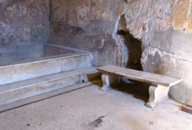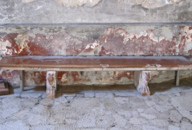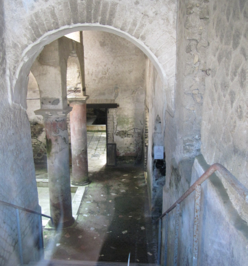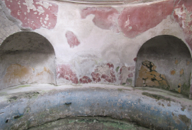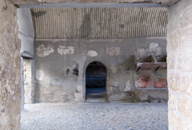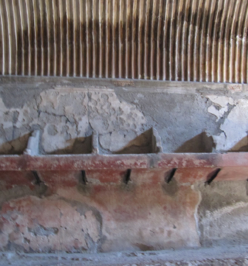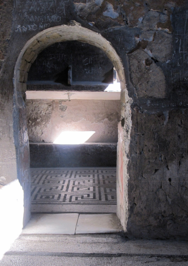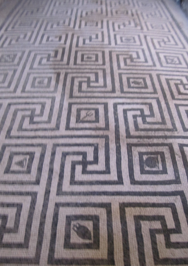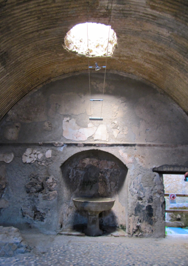The Baths
Herculaneum excavations
Environs of Mount Vesuvius
near naples, southern italy
europe
June 8, 2010


The Baths
Herculaneum excavations
Environs of Mount Vesuvius
near naples, southern italy
europe
June 8, 2010



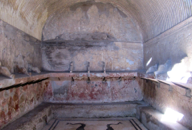
Like so much of the Ercola “Herculaneum”, the baths or spas were not only for hygiene and health, but were for socializing, with the men and women’s baths separate from one another. The baths were beautifully designed and elegantly appointed, as exemplified by one of the two best-preserved examples of Roman baths in Herculaneum, the Therme Femmenili. This woman’s bath had mosaic floors that were most beautiful and intact. These designs, made of small cubes of black and white marble were laid in intricate and artistic patterns in a style called opus tessellatum. When Henry and I visited Herculaneum, we encountered four different baths. The first, in an area that would have been near the beach, before the eruption of Vesuvius, was a public bath built underground beneath a piazza. A gaze down a long flight of steps revealed columns supporting arches in what would have been a large vaulted room as a waiting room of the public bath, with separate bathing chambers for men and women. We were unable to explore this bath as it was under restoration. Later, as we explored the ruins of the city, we found two additional baths: Therme Maschili, the baths for men, and Therme Femmenili, the baths for women. In addition to this, in the block known as Insula Orientalis was a palaestra, or Roman gymnasium built around a large, cross-shaped pool. This huge complex also contained baths for the athletes. In Herculaneum, architects had mastered the engineering for steam and condensation. The baths included various sections identified as the frigidarium (for old water baths), the tepidarium (for warm water baths), the calidarium (for hot water baths) and the laconicum (or sauna). All the walls of the baths had pipes spaced at regular intervals, to conduct hot air throughout the room, and to send the heated air beneath the raised floors to warm the interiors. Light was beamed into various rooms through openings in the ceiling. Pools, fountains, and shallow wells for washing feet could be seen here as well. The most intriguing aspect of the baths was the ceiling detail: ceramic ridges approximately one inch apart assured that the water ran across the ceiling instead of dripping on the patrons, a design feature that could be effectively used in spas today. Each of these two baths also had an enclosed outdoor terrace, open to the sky, where the patrons would have been able to relax and socialize in the fresh air. It was astonishing to see these refined, functional spaces so beautifully and practically designed in the first century.
PHOTOS: Left Column: 1. The changing room of the Therme Femmenili, women’s baths. Regularly spaced compartments on a shelf are positioned above a bench. 2. Mosaic patterns on the floors of the baths for women. 3. Bench along a steam room in the women’s baths. Bench and pool in the Therme Femminili. Center, Top: A mosaic of Neptune surrounded by sea creatures including an octopus, in the waiting room, the main of the Therme Femminili. Center, Middle: Entrance to the public baths that would have been near the sea. This area is being restored, so we couldn’t enter. However, the glimpse of the arches supported by columns is evidence of an elegant, vaulted space. Center, Bottom: The “locker room” with a divided shelf in the There Maschili. The ceramic ridges in the barrel vaulted ceiling prevented the therme’s condensation from dripping on the patrons. Right Column: 1. View of two adjoining rooms in the Therme Femmenili. 2. Complex Greek key pattern in opus tessellatum on the floor in the Therme Femmenili. 3. Fountain and oculus in the Therme Maschili.

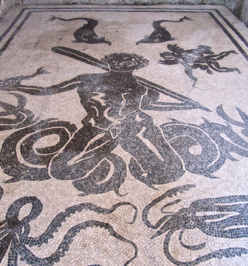
Ercolo Scavi Therme
